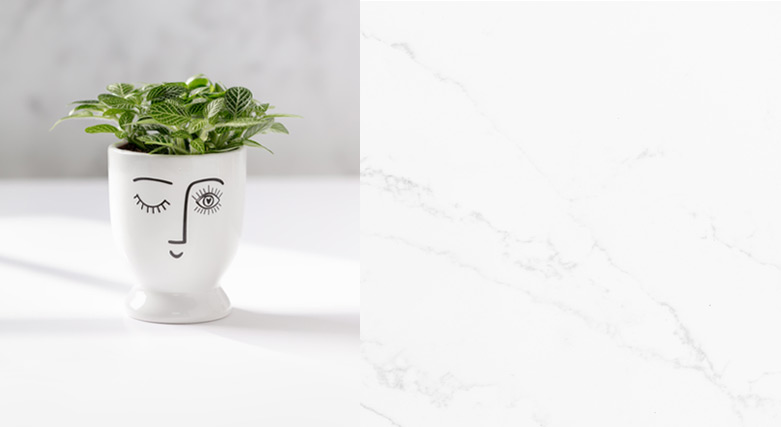Many interior designers face several challenges in promoting their unique talents and adequately marketing their business. Conquering the marketing side of a business can be a complicated process. With so many design professionals out there, competition is undoubtedly high, so knowing exactly what defines your style and sets you apart from everyone else is key to a successful business. Here are three essential steps every interior designer should understand before starting a business.
Step 1: Discovering Your Place

Find Your Individual Approach
Choosing to be an interior designer means that you find pleasure in making others’ design dreams come true. By helping them create an ideal living environment, you are helping them have a positive perspective on their lives. As a unique individual, you must have your own individual approach. Ask yourself what aspects of interior design satisfy you the most, and focus on highlighting those.
Leverage Your Communication Skills
When starting up your own business, it is wise to identify your unique way of dealing with people. There are many interior designers who will be competing with you, so identifying your strengths in design. Communicating them effectively to potential clients is essential if you want to see your business thrive.
Get Personal
To see your client list grow, you must leave modesty aside. Clients are interested in you, not only as an interior designer but as an individual too. Avoid falling into the trap of believing that they are only interested in your knowledge about design. Remember that any unique talent, education, and experience will be appreciated, even if they are not design-centered. Your aim is to inspire your clients through your work, so trying to inspire them on a personal level will only work in your favor.
Self-evaluate
Self-evaluation is a big part of the process of finding your place in the design world. Examine your progress, achievements, and experiences clearly and honestly. Assessing personal strengths and weaknesses will allow you to work harder to perfect your skills and promote your business better.
Be Honest
It is crucial that your abilities as an interior designer are neither underestimated nor overestimated. Find the perfect balance by being honest with your potential clients about your services. This will help set the right expectations and help you build a trustworthy firm. This will also avoid misunderstandings that will negatively affect your business’ reputation.
Pick Your Favorite Project
Finally, identify which projects interest you the most. Although you may be a very talented interior designer, capable of designing many styles, surely there is something you are best at. For some, it may be designing family homes in the country, while for others, it may be industrial-style lofts in the city. Take plenty of time to discover the exact type of projects and their characteristics that offer you pleasure while reminding you why you became an interior designer.
Step 2: Profiling Your Ideal Clients

Review Existing Clientele
Every action you take should be oriented around your clients; this is why identifying your ideal client is so important. Consider it a two-way street: choosing to do business with people who manage to inspire you and be inspired by you is crucial. When trying to determine your ideal client, you needn’t look further than your existing client list. It is most likely that they will represent your preferences and interests. If this is not the case, then you know which type to avoid in the future.
Be Selective
One of the benefits of setting up your own business is the freedom to choose who to work with, and there is nothing wrong with being selective. On the contrary, you will find that working with people whose company you enjoy will raise your productivity levels while letting your creativity and passion evolve.
Assess Previous Client Relations
Previous clients can be one of your best sources to understand your client preferences. Closely study those who have stood out over the years until you find some commonalities. They most likely share common traits – maybe they belong in the same age group, marital status, or economic status. Once you have done this, your ideal target market will reveal itself.
For example: As a young interior designer myself, I enjoy working for couples my age. The homes I mostly enjoy designing are my clients’ first residences as I like to offer them their first cozy, intimate, and personal space where they can begin building their family and futures.
Host Pre-Project Meetings
Another very important factor to consider is the client’s behavior and character, which, unfortunately, on many occasions, is difficult to predict and understand in advance. Arranging a couple of appointments before the project begins will help you estimate how pleasant the cooperation may be. In order for both the client and yourself to gain a positive experience, matching personalities is always advantageous. For instance, if you find that working with overly demanding people negatively affects your work, it is a good idea to avoid them in the future. After meeting a client, try to picture them following your professional instructions. Can you see them doing so, or do you get a sense that they will prevent you from doing your job properly? Do you see them creating unwanted tension? You should be prepared for every case. Spending some time trying to analyze your client’s intentions will help you with that.
Your Ideal Clients May Find You
New designers in the primary stages of building their clientele normally work with their clients’ tastes and try to offer them whatever style they desire. In other words, they adjust to their clients rather than finding clients that adjust to them. This is understandable because they are in the starting phase of their careers where any experience is a positive one. As the business grows, designers should work towards attracting the clients that suit their style – such that instead of you seeking to find your ideal clients, your ideal clients will find you.
However, keep in mind that although you may be an expert in designing a specific style, you need to consider whether there are enough potential clients whose needs you can serve. Think of your ideal client as the one with needs that only you can fulfill. Once you have identified your unique talent, you can create a clientele that demands those specific needs.
Step 3: Understanding the importance of ‘Brand Proposition’ & ‘USP’

Most interior designers who set out to build their businesses will have encountered the terms ‘brand propositioning’ and ‘USP.’
Brand Proposition
A brand’s proposition should be a clear and honest statement that focuses on all the benefits your brand has to offer. Providing your target market with a brand proposition that is engaging and offers positive solutions to their desires and needs will be extremely beneficial to your business. On the one hand, your existing clients will have a continuous, positive perspective of you, while on the other, you will attract many new clients. Another term you can use when referring to brand proposition is ‘brand statement.’
There are four basic elements to consider while creating a strong brand proposition:
- The target client
- Defining the market
- Making a promise
- Offering clients a reason to believe
For example: For those in love with minimal home design (target client), Richard Hoffenstein (company name) is an interior designer (definition of the market) who is able to transform your interiors (promise) thanks to his superb talent and experience (the reason).
Unique Selling Proposition (USP)

For your brand’s proposition to truly stand out, you should also include a Unique Selling Proposition (USP). Simply put, you should inform your clients of your unique face so you can be easily identified and separated from your homogenous competitors. As Late Theodore Levitt, author, and ex-professor at Harvard Business School says,
“Differentiation is one of the most important strategic and tactical activities in which companies must constantly engage.”
For clients, finding a designer with whom they can share their vision can be a daunting process. Your unique and strong selling proposition should have the strength to assist them with this and attract them to you.
For example: If you wish to treat your windows to beautiful draperies (target client), interior designer (defining the market) Richard Hoffenstein (company name) will not disappoint you (promise). His unique taste, along with his ability to understand a client’s vision (reason to believe) lead him to create stunning custom-made window treatments which can’t be found elsewhere (USP).
Apart from being used for marketing purposes such as websites, flyers, and business cards, your USP is an excellent tool for training your employees in understanding what your brand represents. As you will be communicating your message about your brand to the outside world, spending some dedicated time creating a unique and impressive message is worth it, because it is going to represent your unique business, your designs, and you as a person.
Conclusion
The steps listed above are basic guidelines to help you ponder over your own talents and abilities as an interior designer. Clearly, what you learned in college is just one part of the deal. What you learn about the business side of interior design, and how prepared you are to navigate your way around it is the other significant aspect of the business. So, use these guidelines to assess your talents, identify your shortcomings, and prepare yourself to take on the world of the interior design business.
Are there any other aspects to consider before starting an interior design business? Let us know in the comments about your experience when you first started your interior design business.










